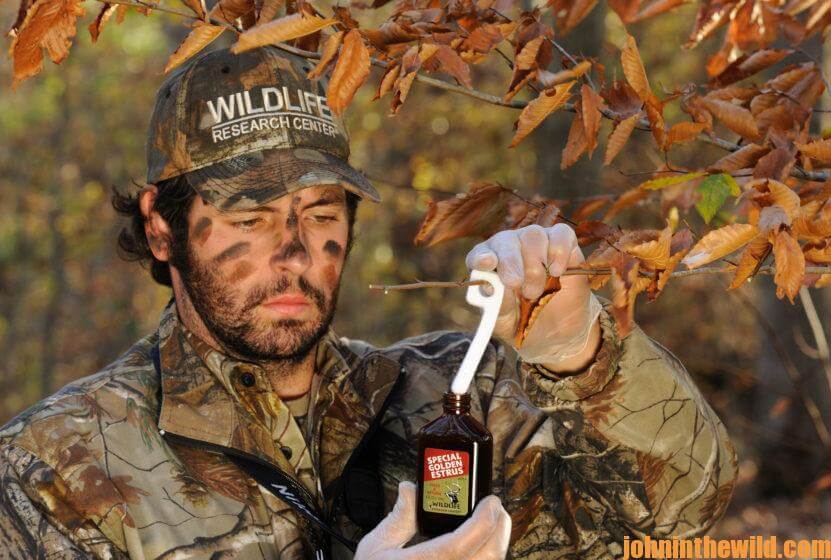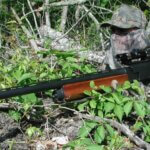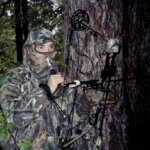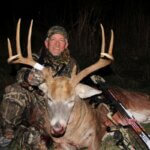Editor’s Note: Good bowhunters can be better bowhunters, if they don’t commit these deadly bowhunting sins that decrease their odds for bagging deer, especially trophy deer. Sometimes even good bowhunters – outdoorsmen who have taken several deer with their bows and who have hunted for 4 or 5 years – make these mistakes. I’ve gathered this information from some of the top bowhunters I know.
Not Knowing Where to Put Deer Lure:
Often hunters are very excited about all the lures and scents on the market today. However, many good bowhunters don’t understand the difference in a cover-up scent and a deer lure. A cover-up scent or a masking scent is used to help disguise human odor, not to attract deer. Therefore, these scents are best pinned-to, poured-on or wiped-over the bowhunter’s outer clothing. A deer lure is made and designed to attract deer. When the deer smells the lure, he’s supposed to come-in looking for whatever gives-off that odor. For example, a lure like doe-in-estrus is produced for the hunter to put around his stand to hopefully cause a buck to come into the area, searching for an estrous doe that’s urinated in that spot. Since the buck comes-in looking for the doe, if the hunter puts that buck lure on his body, then the deer will come-in looking for the hunter. The deer’s nose shows the deer’s eyes where to search for the critter that gives-off the odor. If a bowhunter in a tree stand smells like an estrous doe, that buck will come-in and look-up into that tree for the doe that surely must have climbed it. He’ll spot the hunter, spook and run. So, to effectively use a buck lure, leave the buck lure on the ground or at eye level to the deer. Then, when the deer comes-in, he’s looking at the lure and not you.
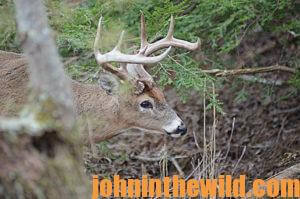 Another mistake hunters make with buck lure is they put it on their feet, the soles of their shoes or the cuffs of their pants and then walk into the woods. If a deer crosses that path and smells the lure, and the hunter’s facing into the wind and has walked into the wind to reach his stand, then when the buck follows that lure scent, he’ll walk-up behind the hunter, look up into the tree where the strongest scent is coming from and spot the archer. Only use cover-up scent on the soles of your feet or the cuffs of your pants. Put-out buck lure where you want the buck to show-up, and only place it in a spot where you want him to look.
Another mistake hunters make with buck lure is they put it on their feet, the soles of their shoes or the cuffs of their pants and then walk into the woods. If a deer crosses that path and smells the lure, and the hunter’s facing into the wind and has walked into the wind to reach his stand, then when the buck follows that lure scent, he’ll walk-up behind the hunter, look up into the tree where the strongest scent is coming from and spot the archer. Only use cover-up scent on the soles of your feet or the cuffs of your pants. Put-out buck lure where you want the buck to show-up, and only place it in a spot where you want him to look.
Not Understanding When to Rattle to Deer:
Most experienced bowhunters know that rattling can be an effective tool for calling-in bucks, but many believe that the best time to rattle is during the peak of the rut. The rut occurs at about the same time every year in a given area. You even can plan your vacation for next year around the rut, because the rut is controlled by the shortness of the day and the amount of light that enters a deer’s eye. Therefore, each year on December 22, there generally will be the same amount of light. If that happens to be the day that’s the peak of the rut in your region that year, there’s a good chance that the same day next year also will be the peak of the rut. Although old timers once believed that a cold snap touched-off the rut, all that usually happens during a cold snap is that deer become more active. Deer are more comfortable in cold weather, because 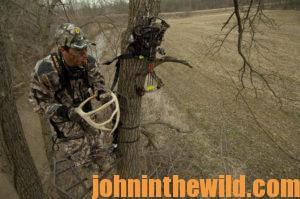 they have hollow hair and are well-insulated, so they may move more.
they have hollow hair and are well-insulated, so they may move more.
Remember that the buck is ready to breed as soon as he comes-out of the velvet, but he won’t breed until the doe is ready to be bred. Therefore, many bucks in the woods are waiting on that first estrous doe to come-into heat. Rattling or using a grunt call 2-weeks before the rut begins is an effective way to call-in a buck. When that ole boy is in the woods listening and hears horns clashing, he thinks to himself, “Somebody out there has found a hot doe, and while they’re fighting over her, I’ll move-in and breed her.” Or, he hears a grunt call and may think, “Some deer is tending an estrous doe. Maybe there’s two of those does, and I can move-in and breed one before anyone notices.” Just after the rut, the buck’s looking for a late bloomer, a doe that comes into estrus after the other does have. Therefore, using rattling horns and grunt calls 2-weeks after the rut also can be very productive. Don’t forget, during the peak of the rut, many bucks will have does with them. Then they may be less likely to come to rattling horns or grunt calls.
To learn more about hunting deer, check out John E. Phillips’ book, “How to Hunt Deer Like a Pro,” available in Kindle, Print and Audible versions, at (http://amzn.to/YpoQHA).
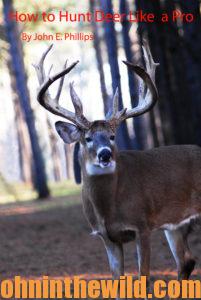 Tomorrow: Not Being Alert in a Stand When Hunting Deer and Waiting on a Perfect Day
Tomorrow: Not Being Alert in a Stand When Hunting Deer and Waiting on a Perfect Day



